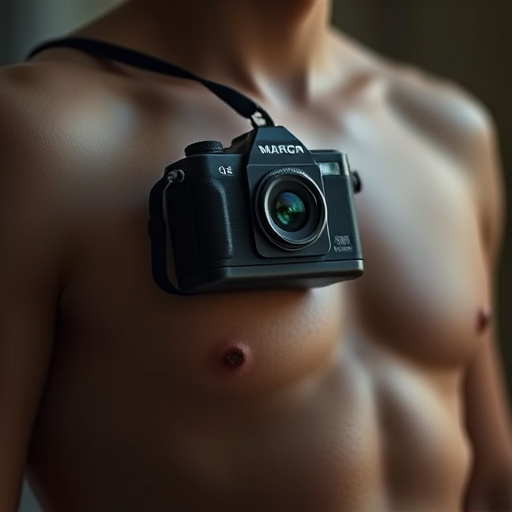Hidden personal body cameras, compact wearable surveillance devices, capture authentic real-world experiences. With video and audio capabilities, they offer enhanced safety, documentation, and evidence in various scenarios. However, their use navigates legal complexities and privacy concerns, requiring users to understand local laws and respect others' rights. When choosing a camera, consider features like HD video, night vision, noise cancellation, storage options, waterproofing, and battery life.
“Uncover the power of discreet surveillance with our in-depth guide to hidden personal body cameras. This comprehensive overview explores their multifaceted applications, from enhancing personal safety to aiding law enforcement. We delve into the benefits and legal aspects, ensuring you’re informed about privacy concerns.
Learn which features matter most when selecting a reliable hidden camera, offering peace of mind and superior performance. Discover how these innovative devices are reshaping security measures in today’s world.”
Understanding Hidden Personal Body Cameras: A Comprehensive Overview
Hidden personal body cameras, also known as wearable surveillance devices, have gained significant attention for their ability to capture unfiltered, real-world experiences. These compact and discreet cameras are designed to be worn on the body, either clipped onto clothing or integrated into accessories like hats or sunglasses. Their small size and covert nature make them a powerful tool for capturing personal moments, documenting everyday life, and even serving as a safety measure in various situations.
One of the key advantages of hidden personal body cameras is their ability to provide audio recording alongside video. This feature allows users to capture not just visual elements but also vital contextual information, such as conversations, ambient sounds, and crucial details that can enhance the narrative of the recorded content. With advancements in technology, these cameras offer high-definition video quality and crisp audio, ensuring that every detail is captured accurately. Understanding how to operate and utilize hidden personal body cameras effectively can empower individuals to document their experiences with a new level of clarity and authenticity.
Benefits and Applications of Hidden Personal Body Cameras
Hidden personal body cameras, equipped with audio capabilities, offer a discrete yet powerful tool for capturing and documenting personal experiences. One of the primary benefits is their ability to provide an unbiased, first-person perspective, making them invaluable in various situations. These cameras can serve as a means of self-protection, especially in public places where one might feel vulnerable or in instances where witnessing an event could be crucial. For instance, individuals who frequently travel alone, engage in outdoor activities, or work in potentially risky environments can use these devices to ensure their safety and provide evidence if any unfortunate incidents occur.
The applications of hidden personal body cameras extend beyond individual security. They can be a game-changer for journalists and activists, allowing them to capture unfiltered reality without drawing attention to themselves. This discreteness enables more authentic reporting and documentation, especially in areas where access is restricted or the risk of censorship exists. Additionally, these cameras can aid law enforcement agencies in investigations by offering covert surveillance, helping to solve crimes and ensure public safety. With their versatile nature and advanced technology, hidden personal body cameras are transforming the way people document and protect themselves in today’s digital age.
Legal Considerations and Privacy Concerns with Hidden Cameras
The use of hidden personal body cameras, especially those with audio recording capabilities, raises significant legal and privacy considerations. In many jurisdictions, the legality of such devices depends on specific regulations regarding surveillance and privacy rights. While some areas may permit their use for personal protection or documentation, others have strict restrictions, particularly when it comes to capturing audio without explicit consent.
Privacy concerns are paramount, as hidden cameras can invade the personal space and privacy of individuals unaware they are being recorded. This is especially true in public spaces where people expect a reasonable expectation of privacy. The use of these devices could lead to potential abuse, such as unlawful surveillance or the dissemination of sensitive information without consent. It’s crucial for users to understand the legal boundaries and respect the privacy rights of others to ensure responsible and ethical usage of hidden personal body cameras.
Choosing the Right Hidden Personal Body Camera: Features to Look For
When selecting a hidden personal body camera, consider its intended purpose and your specific needs. Look for cameras with high-definition video recording (at least 1080p) for clear images and evidence. Night vision capabilities are crucial for low-light conditions, ensuring you capture essential details. Built-in audio is a must-have feature to record conversations accurately; choose models with noise cancellation technology to ensure crisp audio quality even in noisy environments.
Storage options vary; some cameras offer internal memory while others support microSD cards, allowing for extended recording time and easy data transfer. Waterproofing can be beneficial if you plan on using the camera outdoors or in challenging conditions. Additionally, consider battery life; longer durations mean less frequent charging, making it ideal for all-day use. Always check privacy laws regarding hidden cameras to ensure your usage complies with local regulations.
